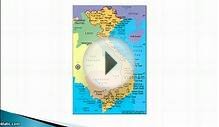
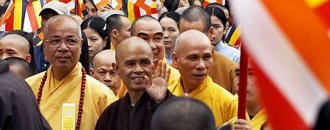 Ven. Thich Nhat Hanh’s return from exile
Ven. Thich Nhat Hanh’s return from exile
Zen Master Thich Nhat Hanh gone back to Vietnam in 2005, after almost 40 years of exile for having required an-end to the Vietnam War. Their return lured tens and thousands of individuals his talks and retreats.
His available teachings on mindfulness and restored design of Buddhism with less emphasis on worship and ceremony, and more on day-to-day mindfulness rehearse and private transformation, appealed to a society undergoing quick financial and social change.
Hundreds of young people required to become his monastic pupils with what has become understood, in Vietnam and globally, because the “Plum Village Tradition”. Bat Nha Monastery within the Central Highlands of Vietnam had been offered as a training monastery for those younger monks and nuns.
The monastery expanded rapidly, with retreats and monthly mindfulness days attracting thousands of people, especially the youthful.
The potential risks of talking out against injustice
Thich Nhat Hanh gone back to Vietnam a moment time in 2007 available huge prayer requiems for war dead within the North, the middle and Southern, also to lead days of mindfulness and retreats on ever-growing Bat Nha Monastery. During this go to he met the President of Vietnam, and made certain proposals to reform the Communist government’s control of the Buddhist Church, including dissolving the corrupt and unpopular spiritual Police.
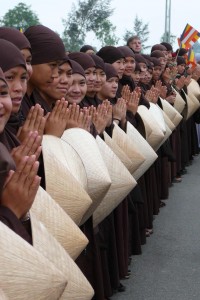 Almost per year later on, in January 2008, Thich Nhat Hanh published the main points of his proposals to the President, triggering anxiety into the ranks associated with spiritual authorities. At round the exact same time, in March 2008, responding to a question at a press seminar in Italy, Thich Nhat Hanh also openly reported his support for Dalai Lama and Tibet, provoking a sudden response through the Chinese federal government, demanding he withdraw their declaration.
Almost per year later on, in January 2008, Thich Nhat Hanh published the main points of his proposals to the President, triggering anxiety into the ranks associated with spiritual authorities. At round the exact same time, in March 2008, responding to a question at a press seminar in Italy, Thich Nhat Hanh also openly reported his support for Dalai Lama and Tibet, provoking a sudden response through the Chinese federal government, demanding he withdraw their declaration.
He refused to do so, whilst still being gone back to Vietnam a 3rd time as a keynote presenter in the May 2008 United Nations Vesak Celebrations in Hanoi. Within a few weeks of his go to, the government started taking actions to limit the tasks of their thriving Bat Nha Monastery.
Government fear
As a government still transitioning from communism towards an even more available economic climate and society, Vietnam’s management felt threatened by the popularity of Plum Village mindfulness practices using youth, and particularly the massive numbers that assembled for Days of Mindfulness and retreats. At exactly the same time, the Religious Police felt threatened by Thich Nhat Hanh’s tips for them to-be abolished.
Government plan switched against Bat Nha monastery and, over a period of 16 months, they used police harassment, slandering, propaganda and diktats to undermine the monastery’s tasks. They made it impossible for monks, nuns and retreatants ahead and get easily, or even for the monastery to number days of mindfulness and retreats. Yet the hundreds of monks and nuns only ever reacted with serenity and compassion, never ever once reacting with hatred or physical violence.
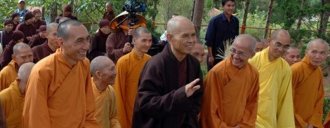 In June 2009, the us government cut-off water, electrical energy and phone lines. Eventually, the government sent in a few compensated mobs to strike the monks and nuns, arrest lots and forcibly evict the remainder. The monks and nuns took temporary refuge in a nearby temple, but federal government repression continued.
In June 2009, the us government cut-off water, electrical energy and phone lines. Eventually, the government sent in a few compensated mobs to strike the monks and nuns, arrest lots and forcibly evict the remainder. The monks and nuns took temporary refuge in a nearby temple, but federal government repression continued.
Rare public outcry
Within days, a huge selection of leading intellectuals, jurists, plan manufacturers and senior Communist Party people finalized a national petition begging the federal government not to repress but to aid the younger generation and their attention in mindfulness.
The united states Ambassador to Vietnam made a good public statement against the government’s activities, the European Parliament passed a Resolution upholding the Bat Nha monks and nuns directly to religious freedom, therefore the un Special Rapporteur for Religious Freedom made the official complaint.
Despite all this, government repression proceeded until finally, in December 2009, most of the Bat Nha monks and nuns had been forcibly dispersed. Some moved over the border and took refuge in Thailand, others started initially to practice in tiny teams underground. Nevertheless other individuals took refuge at Thich Nhat Hanh’s “Root Temple” in Hue, where Thich Nhat Hanh trained as a newcomer and is nevertheless officially abbot.
Seeds of hope
These days, in Vietnam, there is nevertheless no training center within the Plum Village custom. It is not feasible to organise Plum Village-style times of mindfulness or retreats, even at Thich Nhat Hanh’s Root Temple in Hue.
However Thich Nhat Hanh’s three visits to his homeland demonstrated the admiration and love Vietnamese individuals have for his obtainable and practical teachings of “Applied Buddhism”, deeply rooted in Vietnam’s wealthy spiritual heritage.
Numerous youthful Vietnamese continue to ask authorization to ordain as monks and nuns when you look at the Plum Village tradition, making the long journey over the edge to Plum Village Thailand to take action.
As Vietnam takes increasing actions towards tolerance and openness, plenty of Vietnamese hope that they'll manage to discover, share, thereby applying Plum Village mindfulness practices easily, when it comes to advantageous asset of on their own, their families, their workplaces and culture at-large.
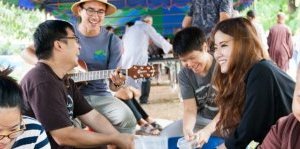

YOU MIGHT ALSO LIKE
